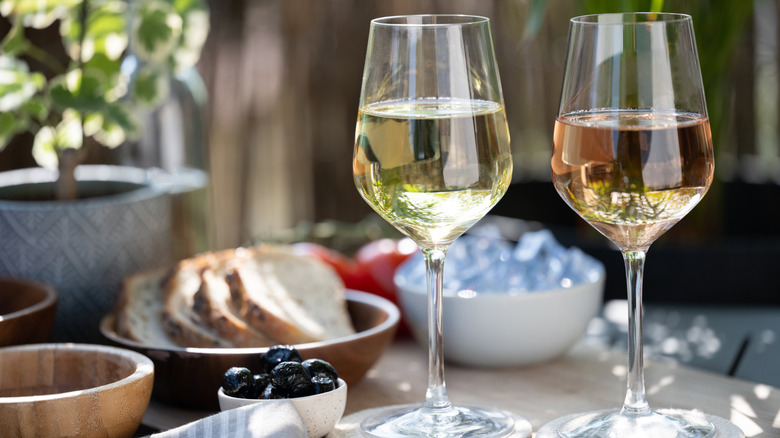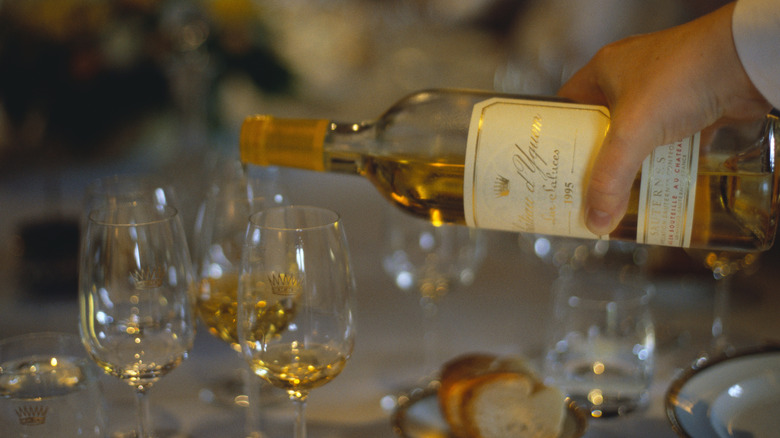What To Consider When Shopping For Sweet White Wine
Some occasions call for a sweet white wine: a dessert pairing, a spicy dish pairing, or maybe a sugar craving. But how do you know if a wine is sweet without tasting it? Before you rock up to a wine store asking for a bottle of syrup, there are a few things to be aware of.
The first thing to remember is that wine is sweet; It comes from grapes containing natural sugar. Beyond that, the sweetness spectrum ranges from dry (but still actually sweet) to so-sweet-it-tastes-like-honey. The basis for the sweetness can come from the variety of grapes used in the wine. For example, on the dry end of the spectrum, you'll find pinot grigio and chablis — considered to be very dry white wines. The sweet side of the spectrum begins with grape varieties with higher natural fructose (like high-alcohol muscat wine and gewürztraminer), and also includes purpose-made, sticky, sweet, dessert wines like eiswein and botrytis or "Noble Rot" wines like Sauternes.
Also, when talking about wine, remember that the natural sugar in grapes ferments into alcohol. Reading wine labels to find the alcohol by volume (ABV) content can help in assessing a wine's level of sweetness.
Try dessert wines for a truly sweet treat
Knowing the grape varieties and their tendency toward sweetness can be very helpful, but the way in which the wine is made also matters. But how would you know that? Unfortunately, the bottle label isn't always helpful, and you'll rarely see sugar content listed. However, if you're buying wine in a wine shop, you may find the wine's technical information displayed nearby. In that case, look for sugar content. The sweetest end of the white wine spectrum contains more than 30 grams of sugar per liter, and the drier white wines contain less than 10 grams per liter. (By the way, Sauternes contains up to 220 grams of sugar per liter. No wonder dessert wine pairs with crème brûlée.)
If you don't have access to the wine's sugar content, read the ABV percentage, which all wine labels must show. Most wines range from 12.5 to 14.5% ABV. Due to the various production methods used for sweet white wines, those with very high ABV are often sweet, but even those with low ABV (8 to 12%) can be sweet too. When the winemaker stops the fermentation process before completion, the yeast cannot consume all the sugar. This leaves residual sugar in the wine that's used to achieve the desired sweetness. Because that sugar did not ferment into alcohol, the ABV is then low.
One last tip: Lower-cost white wines tend to contain higher sugar content. So, for a better chance of sipping something dry, choose a mid- to high-priced option. Cheers!

